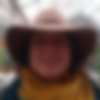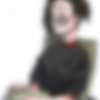Nowruz is the traditional Iranian festival of spring, which starts at the exact moment of the vernal equinox, commencing the start of the spring. It is considered as the start of the New Year among Iranians along with some other ethno-linguistic groups. The name comes from Avestan meaning “new day/daylight”.
It has been celebrated for over 3,000 years in Iran (Persia), Central Asia, the Caucasus, Western Asia, the Black Sea Basin, and the Balkans. It marks the first day of the first month (Farvardin) in the Iranian calendar.
One thing that sets Iran apart from other Middle Eastern countries is this Persian identity, preserved in traditions, language and “Nowruz” [Persian New Year], their most important holiday.
Nowruz is the day of the vernal equinox, and marks the beginning of spring in the Northern Hemisphere. It usually occurs on March 21 or the previous/following day, depending on where it is observed. The moment the sun crosses the celestial equator and equalizes night and day is calculated exactly every year, and families gather together to observe the rituals.
Haft-seen is the name of the special table of Nowruz, the Festival of new year and the beginning of spring. This table is made up of seven items that start with the letter “S”, in fact haft-seen literally means “seven S letters”!
Every item that is placed on the nowadays Haft-seen table symbolizes something positive for the coming year:
Sumac (crushed spice of berries): For the sunrise and the spice of life
Senjed (sweet dry fruit of the lotus tree): For love and affection
Serkeh (vinegar): For patience and age
Seeb (apples): For health and beauty
Sir (garlic): For good health
Samanu (wheat pudding): For fertility and the sweetness of life
Sabzeh (sprouted wheat grass): For rebirth and renewal of nature





